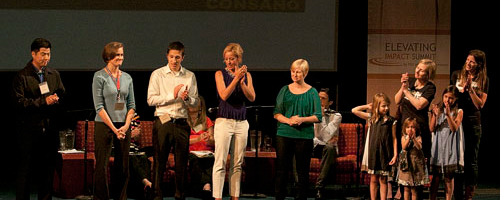The survey is finished and the result is…undetermined? In a never-ending struggle to have every student’s needs met, the Oregon University System’s latest report on whether dual credit courses are a benefit or a hindrance to future college students gave no clear answer.
Jump starting college is good for some
The survey is finished and the result is…undetermined? In a never-ending struggle to have every student’s needs met, the Oregon University System’s latest report on whether dual credit courses are a benefit or a hindrance to future college students gave no clear answer.
Dual credit courses are college courses offered to high school students for credit towards their diploma as well as towards their future college degree. The major question the OUS wants to answer by conducting these reports is whether or not these dual credit courses are actually helping in the preparation for a college workload.
I took dual credit courses during my senior year of high school. I completed a whole year of history, got my first year of writing mostly done and walked into my freshman year of college with 15 credits under my belt. I could have had more credits if I also had math, but like many, that was not my forte.
Two studies were recently conducted—the first performed in 2008 and the second recently drafted. They contradict each other on one major aspect—high school students successfully completing a dual credit sequence at college level did not perform as highly as the students that took the entire series of courses at a community college or four-year university after high school. The first study found no disadvantage while the second proved otherwise.
However, this year’s report only accounted for 4 percent of dual-credit students, whereas the 2008 report had 9 percent. The smaller study sample may have something to do with the latest finding—but the fact remains that further analysis is definitely in order.
A couple of facts that the studies do agree on is that about 81 percent of dual-credit students continue on to postsecondary education and do advance to sophomore status at a higher rate than regular freshman.
“We really need more analysis to draw conclusions on what could be very important evidence that efforts to offer college courses to prepare high school students are well-founded,” Bob Kieran, director of the Office of Institutional Research for the OUS told The Oregonian.
Whether or not this particular study becomes definitive or is forever indeterminate, the program itself does have its pros and cons.
I personally benefited from taking the dual courses in high school and getting a jump-start on my credit requirements—though in the end it didn’t matter how many credits I entered college with, because it took three years to achieve my associate degree and another five years to go back to finish my bachelor’s degree. I wasn’t prepared for the culture shock and freedom of college life, even if it was only community college. But that was personal and people react to the same situations in different ways, and that is partially what OUS is curious about—whether or not such a program actually prepares young students for college study.
How fast or slow a person earns any type of degree is based on their own learning style and how determined they are to achieve their goal. Some students are so determined that they know exactly what they want and have laid out plans of action in order to get it. Many don’t know who they are or what they want to be doing the rest of their lives, so it takes quite a bit of contemplation, and their path is a little longer.
Though I chose a longer path to my college degree, such programs that offer high school students college credits are immensely helpful. Most students have a bit of a shock when entering college life and study whether they have enrolled in such programs or not. In the end, it benefits students by knocking down a few credits while not wasting any time and money in either institution.



